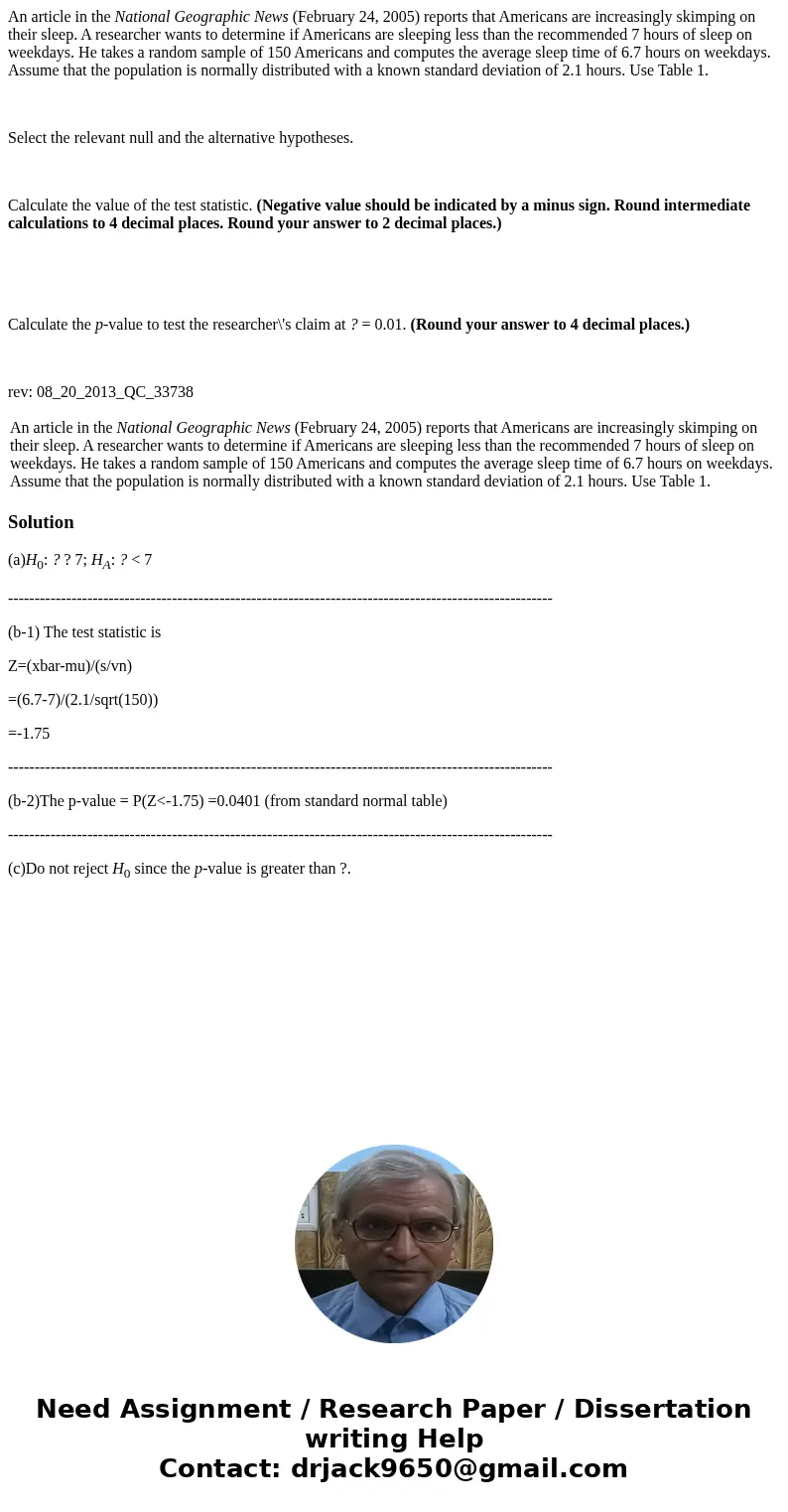An article in the National Geographic News February 24 2005
An article in the National Geographic News (February 24, 2005) reports that Americans are increasingly skimping on their sleep. A researcher wants to determine if Americans are sleeping less than the recommended 7 hours of sleep on weekdays. He takes a random sample of 150 Americans and computes the average sleep time of 6.7 hours on weekdays. Assume that the population is normally distributed with a known standard deviation of 2.1 hours. Use Table 1.
Select the relevant null and the alternative hypotheses.
Calculate the value of the test statistic. (Negative value should be indicated by a minus sign. Round intermediate calculations to 4 decimal places. Round your answer to 2 decimal places.)
Calculate the p-value to test the researcher\'s claim at ? = 0.01. (Round your answer to 4 decimal places.)
rev: 08_20_2013_QC_33738
| An article in the National Geographic News (February 24, 2005) reports that Americans are increasingly skimping on their sleep. A researcher wants to determine if Americans are sleeping less than the recommended 7 hours of sleep on weekdays. He takes a random sample of 150 Americans and computes the average sleep time of 6.7 hours on weekdays. Assume that the population is normally distributed with a known standard deviation of 2.1 hours. Use Table 1. |
Solution
(a)H0: ? ? 7; HA: ? < 7
-------------------------------------------------------------------------------------------------------
(b-1) The test statistic is
Z=(xbar-mu)/(s/vn)
=(6.7-7)/(2.1/sqrt(150))
=-1.75
-------------------------------------------------------------------------------------------------------
(b-2)The p-value = P(Z<-1.75) =0.0401 (from standard normal table)
-------------------------------------------------------------------------------------------------------
(c)Do not reject H0 since the p-value is greater than ?.

 Homework Sourse
Homework Sourse